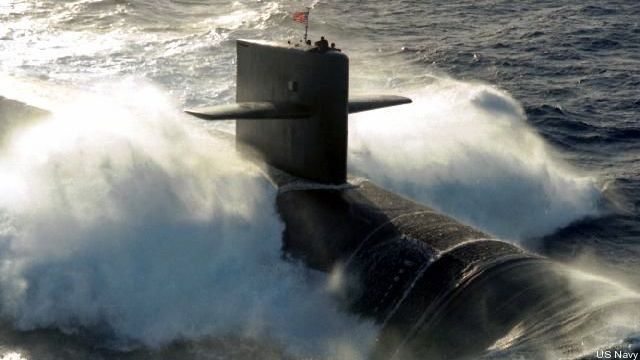Weapons Cuts Raise Warning Flags as Panetta Warns of Rising Powers
Posted on

Editor’s note: Two years ago this August I wrote a piece called “The End of Acquisition,” positing that then-Defense Secretary Robert Gates may well have gone too far in cutting key major programs and reducing research funding. The key quote went thusly:
“With science and technology spending going flat and the national fatigue for wars and defense spending, we could very well create a force with little or no power projection capability or one that is shaped due to budget considerations rather than what the last superpower ought to be thinking about – deterrence,” said one senior analyst who works with the Pentagon and the intelligence community.
Well, that time may be upon us. This morning one of the canniest defense analysts in town, Loren Thompson, noted that “about half” of major weapons programs “have been killed or substantially scaled back.” Thompson, who also works as a defense consultant, said he fears that, “at the rate weapons plans are being trimmed, the entire next generation of warfighting systems may soon be gone.“
This all comes as Defense Secretary Leon Panetta and outgoing Chairman of the Joint Chiefs, Adm. Mike Mullen, warned the country anew of the threat from rising powers such as China. America must ensure, Mullen said yesterday, that such rising states know America stands ready to defend and assert its interests around the globe. For the latest item of note in this regard, see AOL D’s own Carlo Munoz’s piece about the Navy slimming down to nine carrier groups for the foreseeable future.
Here is Loren’s piece in full. [He is, of course, a member of the Breaking Defense Board of Contributors.] This item first appeared on the Lexington Institute’s blog.
Even before major budget cuts hit the Department of Defense, the next generation of combat systems has begun to disappear at an alarming rate. Over the past four years, about half of the biggest weapons programs that the Pentagon was planning to equip the joint force with after 2020 have been killed or substantially scaled back. Few observers have noticed because defense spending remains high and each program change is reported episodically rather than as part of a pattern. Nonetheless, at the rate weapons plans are being trimmed, the entire next generation of warfighting systems may soon be gone.
Consider the Navy. Ten years ago, that service unveiled a plan to develop three new classes of surface combatants that would replace the most common warships in its fleet — a new cruiser, a new destroyer, and a high-speed successor to frigates called the Littoral Combat Ship. The cruiser and destroyer have been canceled, while the Littoral Combat Ship‘s future has been rendered problematic by setbacks in the development of its combat modules. Meanwhile, the Navy is moving to delay purchase of its Ford-class aircraft carriers — the first new-design carrier in 40 years — and budget cutters are eyeing undersea warfare programs for savings. Plans for a successor to Ohio-class ballistic missile submarines, the backbone of the U.S. nuclear deterrent, may be in jeopardy.
The Army has seen every one of its next-generation combat systems killed, leaving some to suspect that the nation’s premier ground force will still be fighting 20 years from now with weapons purchased during the Reagan years. Its future armed reconnaissance helicopter has been killed not once but twice. Both of its planned air defense systems are being terminated (despite contractual commitments to allies who were footing much of the bill for the most capable system). An “aerial common sensor” to replace aging electronic planes that target hostile emitters on the battlefield is also gone. And in the biggest blow of all, former defense secretary Robert Gates canceled a family of networked combat vehicles called the Future Combat System that was supposed to be the centerpiece of Army modernization. Few observers expect the remaining combat vehicles in service development plans — successors to the Bradley troop carrier and Humvee light truck — to survive in the current fiscal environment.
And then there is the Air Force, which may be in the worst shape of all. It has seen production of its top-of-the-line F-22 fighter prematurely terminated with barely half of the official warfighting requirement met, both potential successors to its aged radar planes killed, its next-generation search-and-rescue helicopter scaled back, and its planned constellation of secure communications satellites — which would have delivered global connectivity to the entire joint force — canceled after spending billions of dollars.
Now critics are complaining about the replacement for its 50-year-old aerial refueling tankers, and assailing the F-35 Joint Strike Fighter program that is the only hope the service has for preserving global air dominance.
Some of these programs were too expensive and others weren’t well-matched to the emerging threat environment, but most of them will be sorely missed in the coming decades as U.S. warfighters march off to war without their traditional edge in military technology. The fact that so many have been killed even before the big budget cuts arrive is an ominous trend, one that argues strongly for focusing future military cuts outside technology accounts.
People may still be the most important ingredient in U.S. military power, but many of those people will be put at unnecessary risk in future conflicts if the Pentagon doesn’t stop hemorrhaging the investment programs needed to keep pace with the military technology of potential adversaries.
Subscribe to our newsletter
Promotions, new products and sales. Directly to your inbox.
